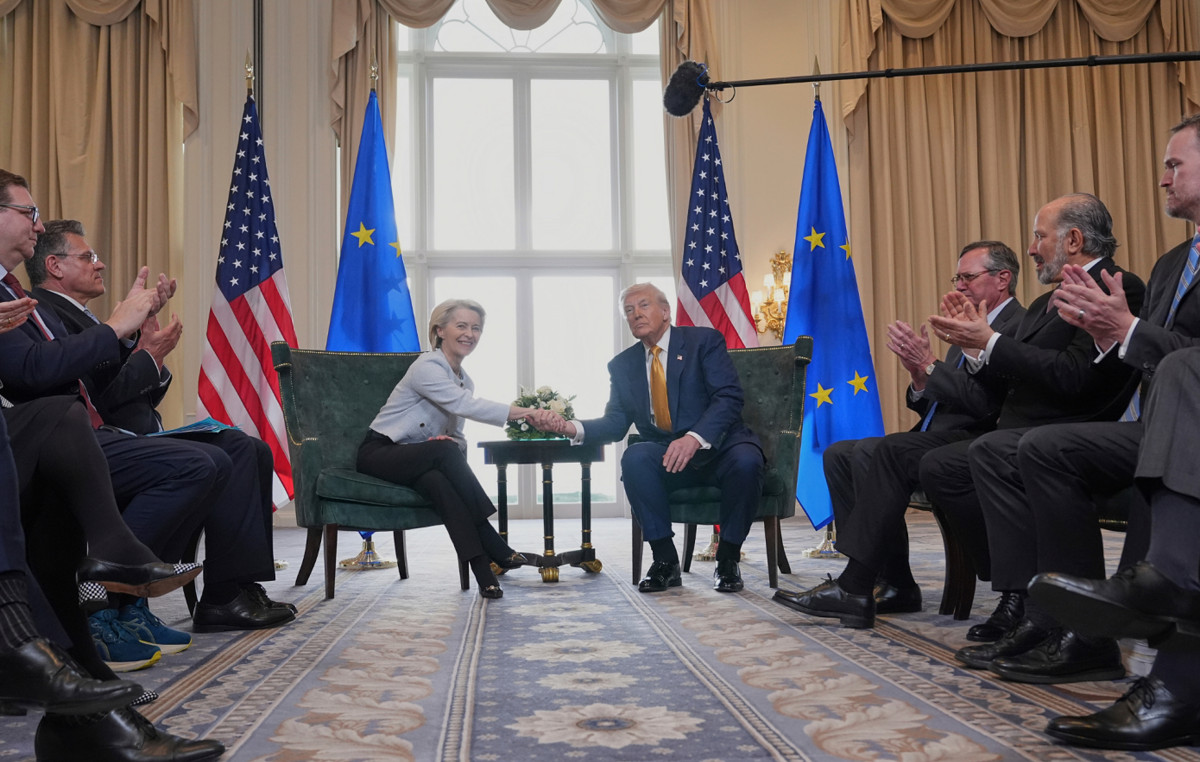- The dollar recovers for risk aversion with Trump tariffs threatening global trade.
- Uncertainty about the size and deadline of US tariffs keeps investors in suspense.
- The solid employment data in the US and the decrease in the hopes of fed cuts provide additional support to the US dollar.
The US dollar is one of the best performances among the main currencies on Monday. The aveverse feeling to the risk of investors in the midst of growing concerns about global trade, since it is likely that the US announces tariffs on imports today.
He US dollar index (DXY), which measures the value of the dollar against a basket of the most negotiated currencies, has risen to the upper range of 96.00, putting a certain distance from the long -term minimums last week, just below 96.00 and approaching a key resistance level, in 97.00.
US tariffs have promoted risk aversion
Trump said the weekend that he will send letters on Monday to countries that did not reach agreements with the US that will face the tariffs announced on April 2. However, the deadline is not clear, since some spokesmen of the US administration have mentioned on August 1, in another probable postponement since the initial July 9.
The usual uncertainty surrounding most of the US government initiatives, together with the renewed concerns about the negative impact of global growth tariffs, is harming the appetite of investors for the risk today, while the US dollar is recovered along with the yields of the US Treasury bonds.
He US calendar It is light this week, but the solid numbers of the Non -agricultural payrolls of the US seen last week dissipated concerns about the US economy and crushed the hopes of fed cuts in July. This will probably provide an additional impulse to the US dollar, at least until the publication of the minutes of the last meeting of the Fed, scheduled for next Wednesday, which could reflect some divergence within the committee.
Tariffs – Frequently Questions
Although tariffs and taxes generate government income to finance public goods and services, they have several distinctions. Tariffs are paid in advance in the entrance port, while taxes are paid at the time of purchase. Taxes are imposed on individual taxpayers and companies, while tariffs are paid by importers.
There are two schools of thought among economists regarding the use of tariffs. While some argue that tariffs are necessary to protect national industries and address commercial imbalances, others see them as a harmful tool that could potentially increase long -term prices and bring to a harmful commercial war by promoting reciprocal tariffs.
During the election campaign for the presidential elections of November 2024, Donald Trump made it clear that he intends to use tariffs to support the US economy. In 2024, Mexico, China and Canada represented 42% of the total US imports in this period, Mexico stood out as the main exporter with 466.6 billion dollars, according to the US Census Office, therefore, Trump wants to focus on these three nations by imposing tariffs. It also plans to use the income generated through tariffs to reduce personal income taxes.
Source: Fx Street
I am Joshua Winder, a senior-level journalist and editor at World Stock Market. I specialize in covering news related to the stock market and economic trends. With more than 8 years of experience in this field, I have become an expert in financial reporting.







